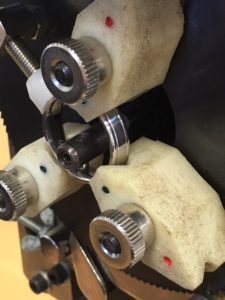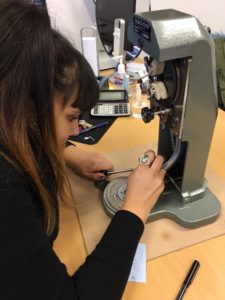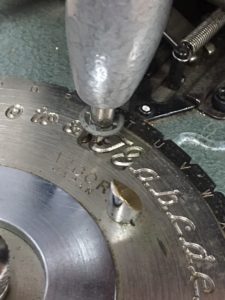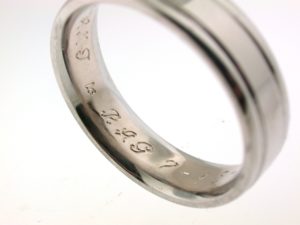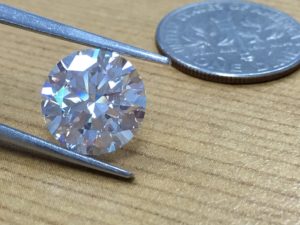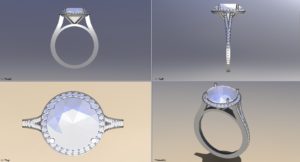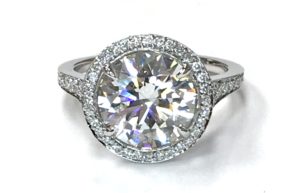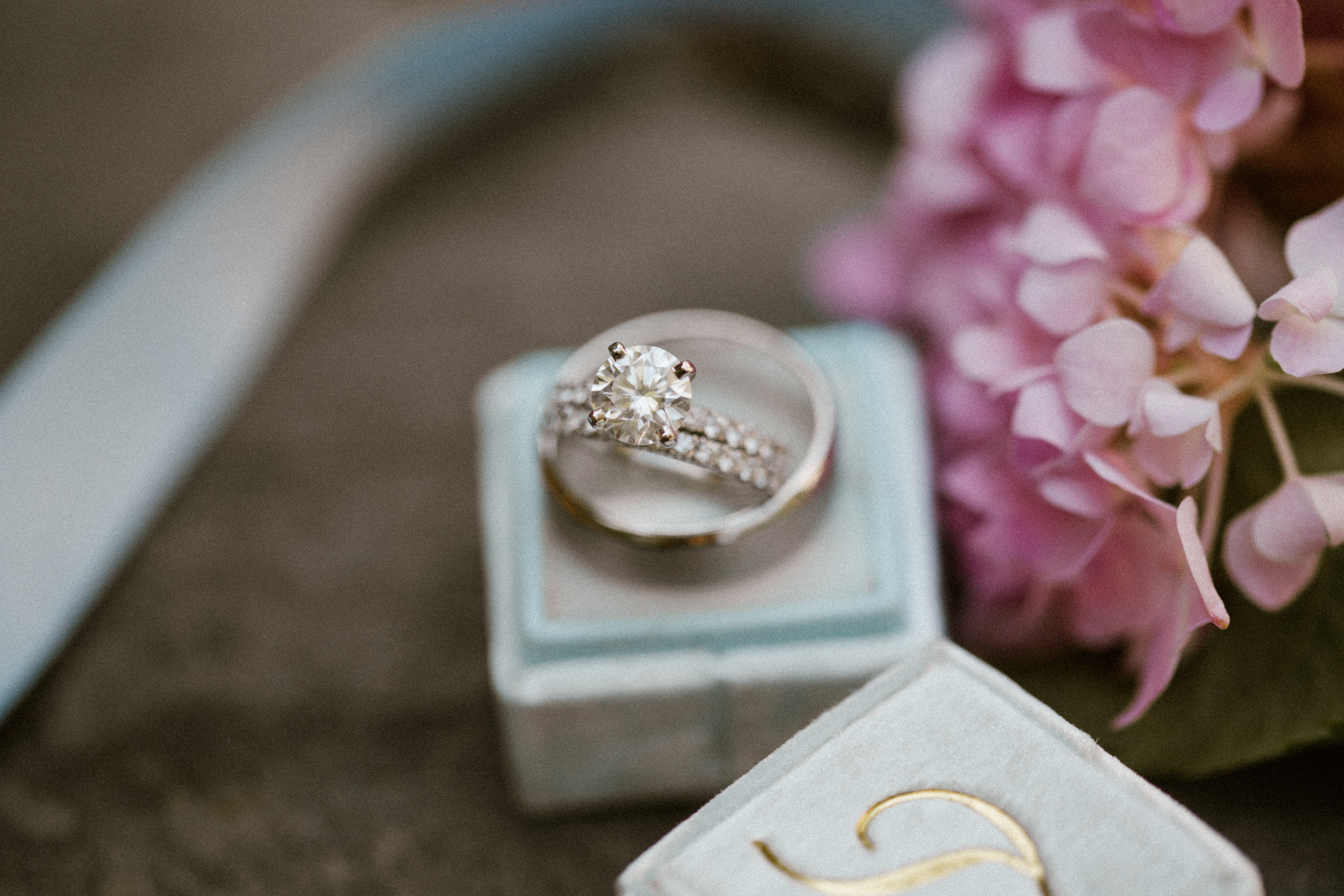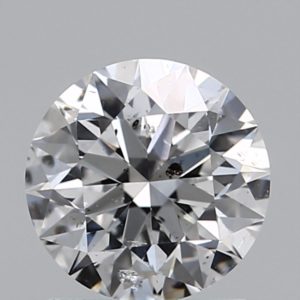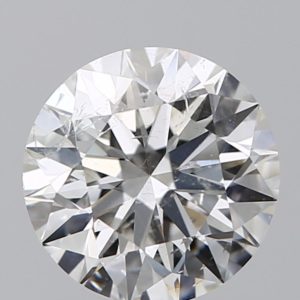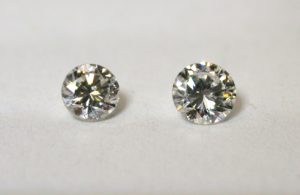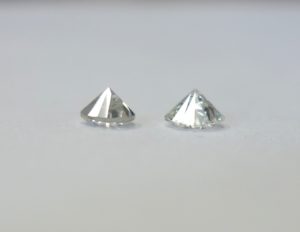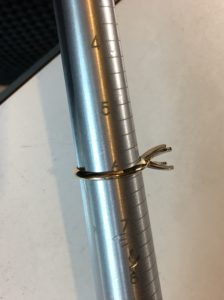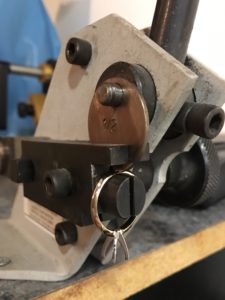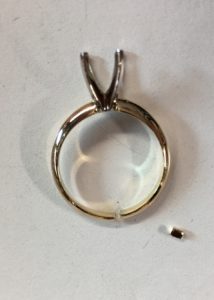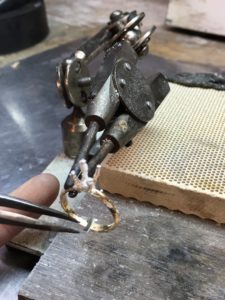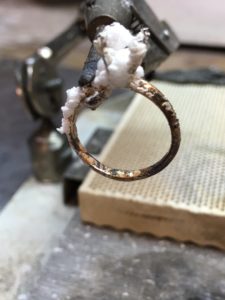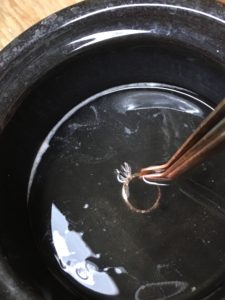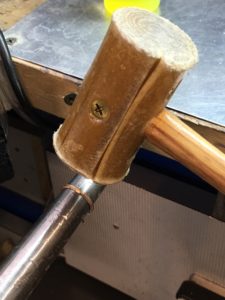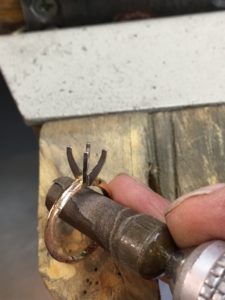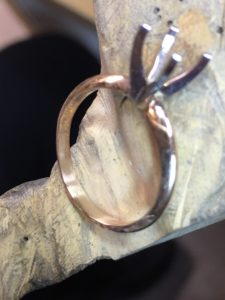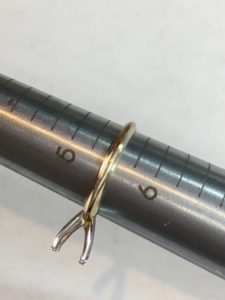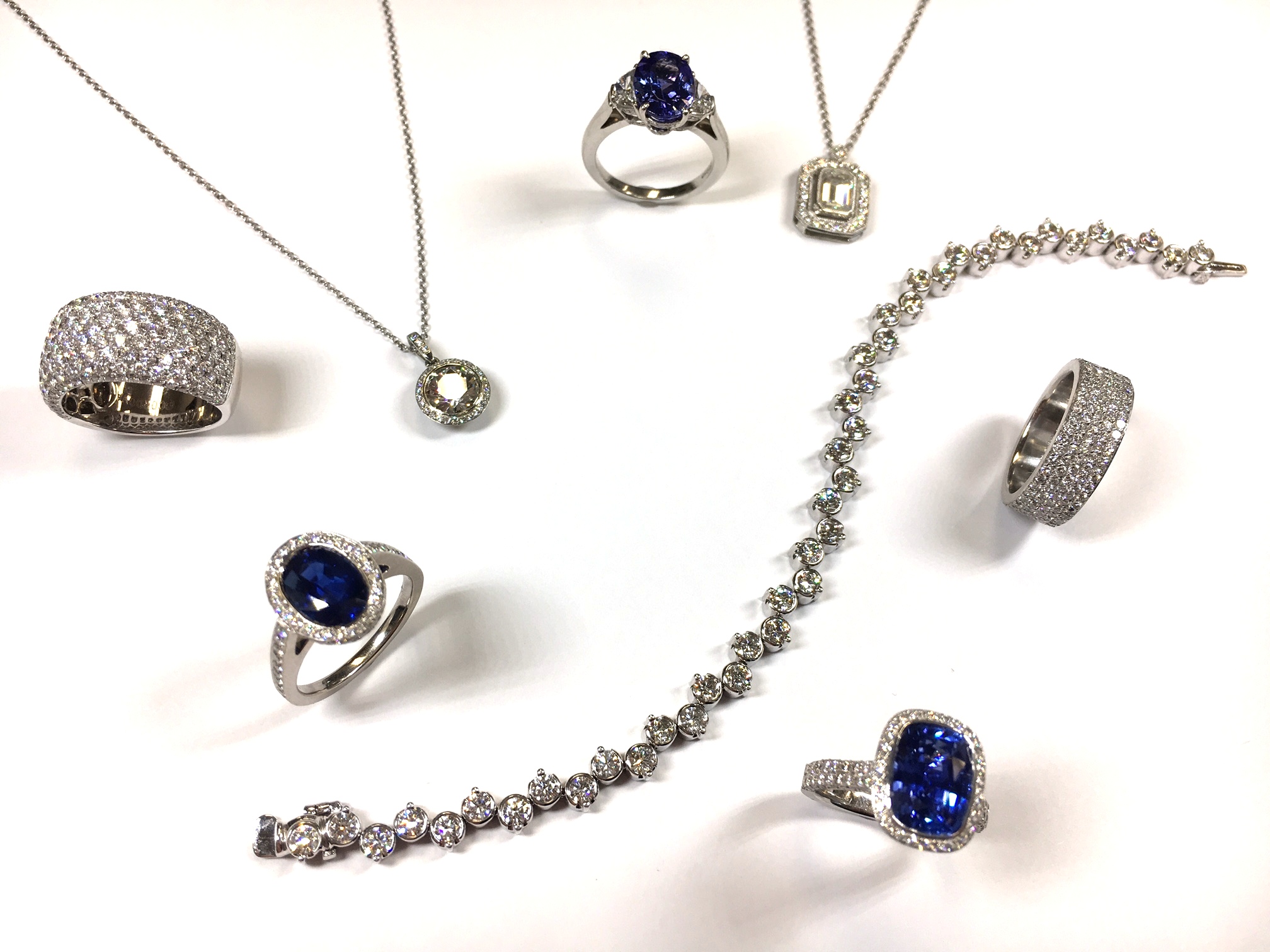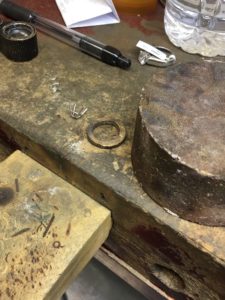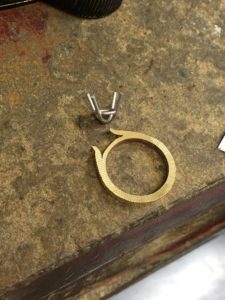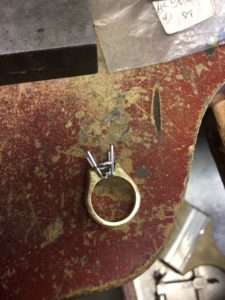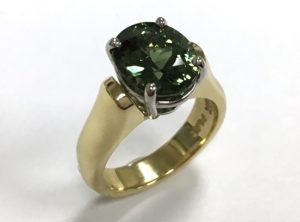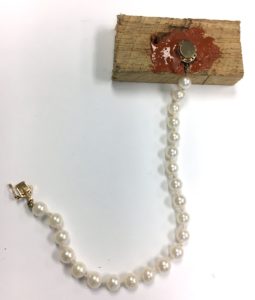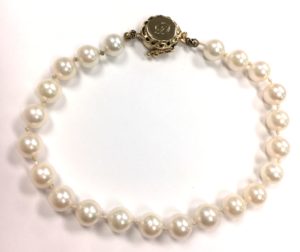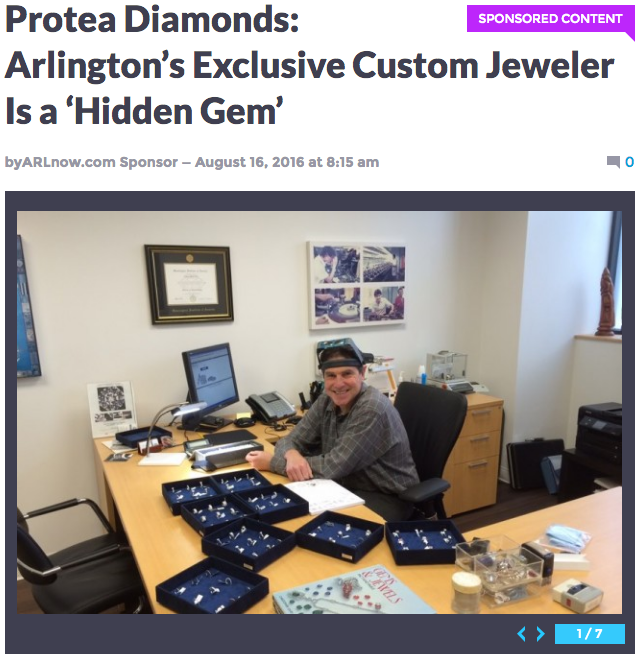There are several methods we use when making a ring. We’ve discussed handmade rings as well using computer-aided design (CAD) in previous blog posts. Another method we frequently use is casting a ring from a mold. This method is useful when replicating an existing piece of jewelry.
For example, in this case we wanted to make more copies of a ring we already had in stock. The first step is to make a mold of the ring. We take the existing ring, and we place it in container with eight sheets of rubber surrounding it. The container is placed in a hot press where it remains for about 40 minutes, during which time the rubber melts around the ring and makes a perfect mold of it. Along with the ring, a metal stem is placed in the container in order to create an opening where the wax will be injected at a later time.
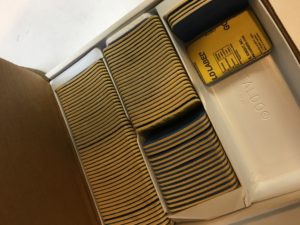
Sheets of rubber that are used to make a mold of a ring.
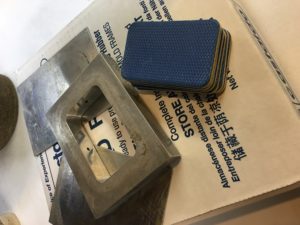
The ring is placed in the center of the stack of sheets, then inserted into this container where the rubber will melt around it.
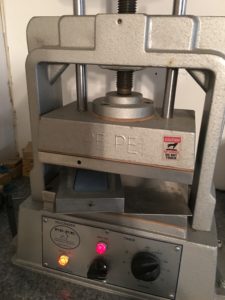
The container of rubber (and the ring) are placed into the vulcanizer in order to melt the rubber and make the mold.
Once the rubber mold has been removed from the vulcanizer, cooled and hardened back to its original state, a blade is used (with a very special and precise technique) to cut the mold open in such a way that it can be closed back tightly in order to make the wax duplicate.
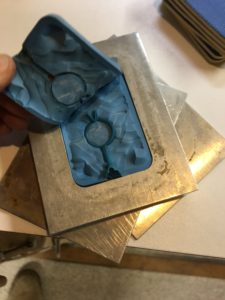
The mold has been strategically cut open, and in this photo you can see the wax replica in the center.
Wax flakes, as pictured below, are placed in a wax injector and melted so that they can be injected into the mold. Using air pressure, the wax is shot into the mold through the opening.
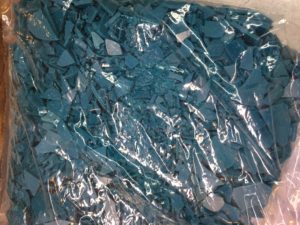
Wax flakes used for making wax replicas.
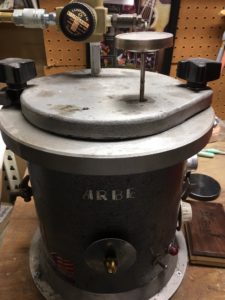
The wax flakes are placed into this wax injector where they are melted and ready to be shot into the mold.
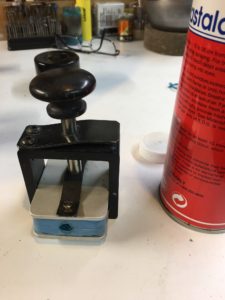
The mold is placed into this holder before the wax is injected.
We make several wax replicas so that we can be sure to have one that comes out perfectly. Sometimes it takes several attempts in order to get the perfect wax model.
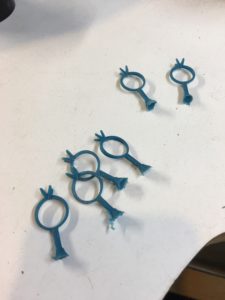
The result: several wax replicas of the ring. It’s always good to do several in case one comes out imperfect or damaged. The casting company chooses the best one and replicates the ring based on that.
Once the waxes are done, we send them off to a casting company who does the final step of making them into a real ring– either platinum or gold. They then send us the rings back, and we put on the final touches- polishing, sizing, setting, and then the ring is good to go!
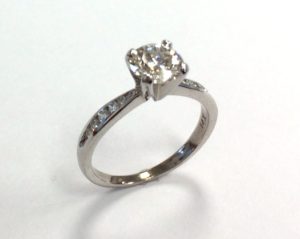
The finished product.

